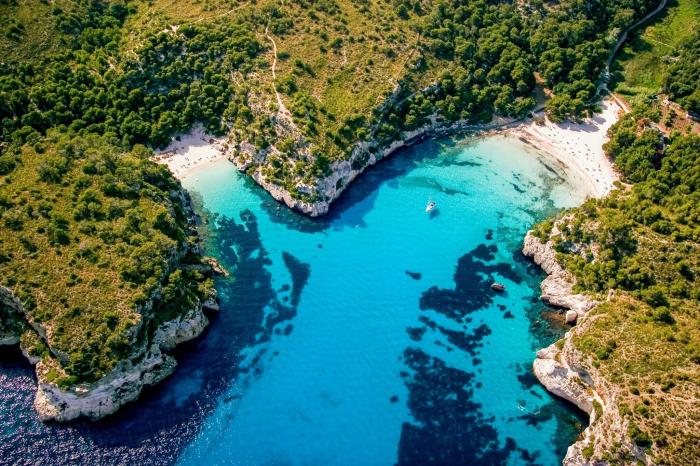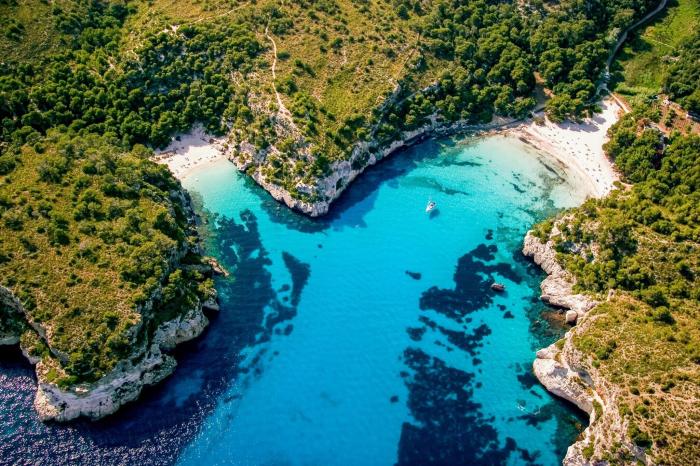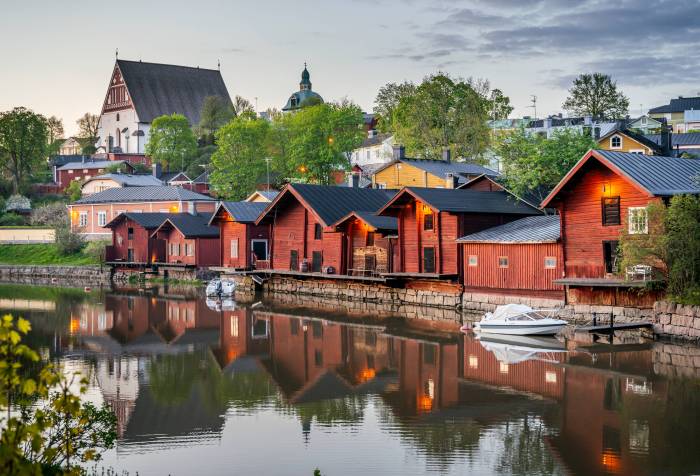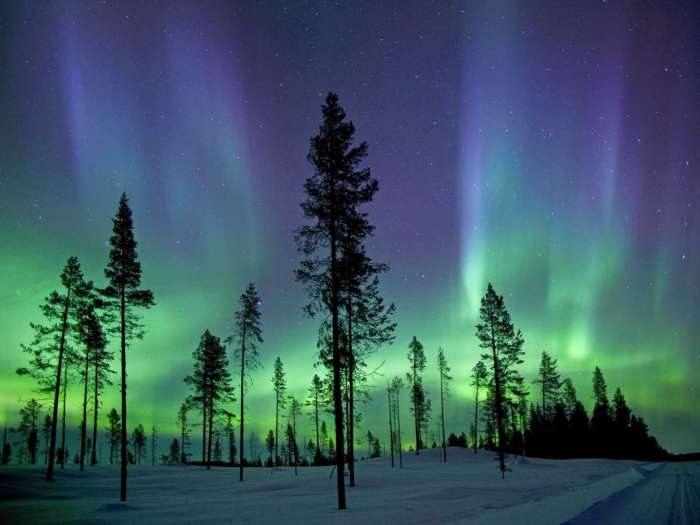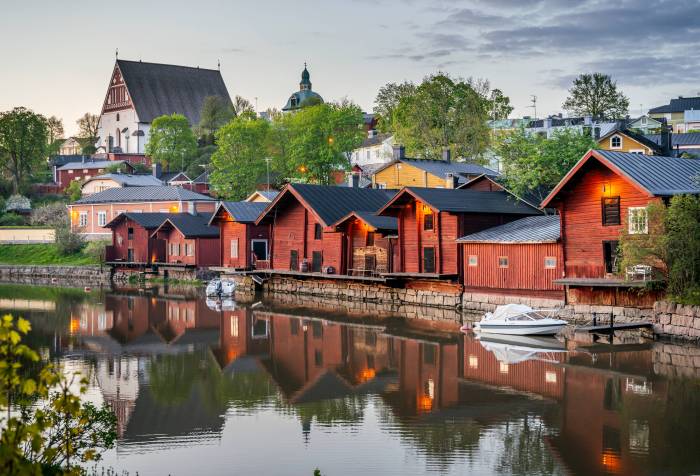Famous cities you thought were capitals but arent – Famous cities you thought were capitals but aren’t. Ever wondered if that bustling metropolis you envisioned as a nation’s heart actually held a different title? This exploration dives into the fascinating world of urban misconceptions, examining the historical and cultural factors that lead to these common misinterpretations. We’ll uncover the truth behind the confusion, revealing the actual capitals and the reasons why these other prominent cities often take the spotlight.
Get ready to have your geographical knowledge challenged, and perhaps even gain a newfound appreciation for the nuanced political landscape of different nations.
This article will present a range of case studies, from major international cities to smaller, yet still significant, urban centers. We will delve into the historical context, analyzing how these misconceptions have evolved over time. The analysis will include a visual component, utilizing maps and charts to illustrate the geographical locations and population comparisons, providing a clear understanding of the urban landscapes in question.
Finally, we’ll examine the role of media and popular culture in shaping these perceptions, demonstrating how misinterpretations can persist despite the readily available and accurate information.
Introduction to the Topic of Mistaken Capitals

Many cities, renowned for their history and culture, are frequently mistaken for the capitals of their respective countries. This misconception stems from a variety of factors, including historical events, cultural significance, and even simple geographical proximity. These misinterpretations highlight the intricate relationship between perception and reality, often blurring the lines between a city’s historical importance and its administrative role.
This often arises from the complex evolution of political boundaries and the shifting centers of power.The historical context of these misinterpretations is often rich and multifaceted. For example, a city might have been a significant economic or cultural center for centuries, but its status as the administrative capital may have shifted over time. Furthermore, the influence of media and popular culture can contribute to these misunderstandings.
People may associate a particular city with a country due to its prominent role in movies, books, or other forms of media, leading to a misperception of its official administrative status. This is further compounded by the often-overlooked detail of the dynamic nature of national capitals.Several factors contribute to the frequent misidentification of cities as capitals. The sheer number of cities globally, each with its own unique history and cultural impact, can lead to confusion.
Additionally, the sometimes-subtle differences in the historical significance of a city versus its official role as a capital can create ambiguity. The sheer volume of information available, often not fully vetted, can also contribute to this phenomenon.Here are some examples of cities frequently mistaken for capitals:
- Some cities, though not capitals, have a strong historical and cultural connection to the country, which contributes to the confusion. Their importance as historical centers, economic hubs, or cultural icons often overshadows their administrative status.
This table illustrates some prominent examples:
| City Name | Often Mistaken for | Reason for Misconception |
|---|---|---|
| San Francisco, USA | Capital of the USA | Historically and culturally significant, often associated with the US due to its major role in American history, but not the seat of government. |
| Manchester, UK | Capital of the UK | A major industrial and cultural center, but London is the capital. |
| Sydney, Australia | Capital of Australia | A significant economic and cultural center, but Canberra is the capital. |
| Cairo, Egypt | Capital of North Africa | A major city in North Africa, but not the capital of the entire region. |
Case Studies of Famous Misconceptions
Many people hold firmly to the idea that a particular city is a nation’s capital, even though it might not be. These deeply ingrained beliefs often stem from a city’s historical significance, cultural prominence, or even just common repetition. This section will delve into specific examples of cities frequently mistaken for capitals, exploring the reasons behind these misunderstandings.
Examples of Common Misconceptions
The following are prominent examples of cities often misidentified as national capitals, demonstrating the diverse factors contributing to these common errors. The historical context and cultural influence behind these misconceptions are vital in understanding how these perceptions take root.
| City | Country | Often Mistaken for | Explanation |
|---|---|---|---|
| Cairo | Egypt | Capital of the Arab world | Cairo’s historical and cultural significance in the Arab world, coupled with its long-standing role as a major hub, frequently leads to its misidentification as the capital of the entire region. This misconception is partly fueled by its vast population, widespread influence, and role in major events in Arab history. |
| São Paulo | Brazil | Capital of Brazil | São Paulo’s economic dominance and immense size often lead to its mistaken identification as the capital of Brazil. The sheer scale of its metropolitan area and the prominence of its business sector create a perception that it holds a more significant political role than it does. |
| Washington, D.C. | United States | Capital of the world | Washington, D.C.’s status as the capital of the United States, its central role in global affairs, and its proximity to other world capitals contribute to its frequent association with global leadership. This perception is reinforced by the presence of numerous international organizations and embassies. |
| Amsterdam | Netherlands | Capital of Europe | Amsterdam’s historical significance, role as a major financial center, and iconic status as a major tourist destination contribute to the misconception that it is the capital of Europe. The city’s cultural and economic influence, though not political, plays a part. |
Historical and Cultural Factors Fueling Misconceptions
The cultural and historical significance of a city plays a significant role in shaping how it’s perceived. This is particularly true in the context of capitals.
- Historical Power and Influence: Cities with a long history of political power, economic dominance, or cultural influence often become associated with leadership roles, even if their political function is elsewhere. For example, London’s historical role as a global power center, despite no longer being the capital of the British Empire, fuels perceptions of its broader influence.
- Media and Popular Culture: Media portrayals, particularly films, books, and news coverage, can reinforce misconceptions about a city’s role as a capital. This can occur if a city is consistently featured in stories that depict it as the center of power, even if it isn’t.
- Economic and Tourist Hubs: Cities with a significant economic or tourist presence might be seen as more central to a region’s affairs than they actually are. This is particularly true in cases where the city’s economic activity is disproportionately large compared to the surrounding area. For instance, Mumbai’s enormous financial sector and large population, while not the political center of India, still creates a perception of significance that fuels the misconception.
Reasons for the Misconceptions: Famous Cities You Thought Were Capitals But Arent

Unveiling the geographical and political factors, historical echoes, and even the subtle influence of tourism that contribute to the persistent confusion surrounding a city’s capital status. Misconceptions often persist due to a complex interplay of historical, political, and even cultural factors. Sometimes, a city’s prominence in one aspect of life, such as economy or tourism, leads to a misinterpretation of its role as a capital.The confusion surrounding which city is a country’s capital isn’t simply a matter of ignorance; it’s a phenomenon rooted in a variety of intertwining historical and political factors.
These factors often intertwine, creating a complex web of misinterpretations that can persist for decades or even centuries. Examining these influences can help us understand why certain misconceptions about capital cities have persisted.
Geographical and Political Factors
Geographical location plays a significant role in capital city selection. Accessibility, natural resources, and strategic positioning often influence the choice of a capital city. For instance, a city situated on a major river or trade route might be more easily accessible and thus a more suitable capital. Political power dynamics, such as the desire to control or access certain regions, also have a profound impact.
Historical events have shaped the political landscape, sometimes leading to a capital’s relocation or a city’s continued association with a nation’s capital status even after a change.
Historical Events and Political Shifts
Historical events, including wars, revolutions, and political upheavals, have dramatically altered the political and geographical landscape of nations. A city that was once a capital may lose that status due to these events. For example, a city’s role as a capital might shift after a major war, or a revolution could result in a new capital city being chosen to represent the changing power structure.
These events often leave behind lingering perceptions that continue to influence how people perceive a city’s role in the nation’s history.
Media Representations and Public Perception
Media representations, including news coverage, documentaries, and popular culture, play a crucial role in shaping public perception. Media portrayals can reinforce or challenge existing misconceptions about a city’s capital status. Consistent media representation of a city as a capital, even if inaccurate, can lead to the persistent misunderstanding of its role.
Tourism and Travel Experiences
Tourism and travel experiences can reinforce or challenge existing misconceptions. A city’s historical significance or economic importance might be misinterpreted as its role as a capital. Travel guides or tourist information often play a role in shaping public perception, and the way a city is presented to tourists can reinforce or challenge preconceived notions. For example, a city that serves as a significant economic center may be mistakenly associated with the capital status in the minds of tourists.
Ever wondered which famous cities aren’t actually capitals? It’s a fun little geography fact-check, but something far more unsettling is happening right under our noses. Major airlines are reportedly selling our data to U.S. homeland security, raising serious privacy concerns. major airlines selling your data to us homeland security This data collection, while potentially helpful for security, sparks questions about the balance between safety and personal freedom.
Still, did you know that Rome, while iconic, isn’t the capital of Italy? Just another fascinating tidbit in the world of geographical trivia!
Table: Factors Contributing to Misconceptions
| Factor | Explanation |
|---|---|
| Geographical Location | Accessibility, natural resources, and strategic positioning influence capital city selection. |
| Historical Events | Wars, revolutions, and political shifts can lead to capital city relocation or persistent misconceptions. |
| Political Shifts | Changes in power structures often impact the choice and perception of a capital city. |
| Media Representations | Consistent media portrayals can reinforce or challenge existing misconceptions about a city’s capital status. |
| Tourism and Travel Experiences | Tourist information and travel experiences can reinforce or challenge perceptions about a city’s capital role. |
Visual Representation of Misconceptions
Misconceptions about capital cities often arise due to a city’s prominence in a region, its historical significance, or its sheer size and population. Visual representations can effectively dispel these myths, highlighting the true location of the capital and providing context for the size and population comparison. This visual approach is crucial for understanding the geographical and demographic realities behind these common misinterpretations.
Geographical Locations of Cities and Capitals
The following map displays the geographical locations of several cities frequently mistaken for capitals, overlaid on a map of their respective countries. This visual representation clearly shows the distance between the city and the actual capital. A color-coded approach, highlighting the actual capital in a different color or style, enhances clarity. This hypothetical map would illustrate various cities (e.g., Lagos, Kinshasa, Cairo) frequently confused with their countries’ capitals (e.g., Abuja, Kinshasa, Cairo) respectively. It would display the location of each city and its corresponding country, as well as the actual capital city. Different colors or markers would distinguish the city from the capital, enabling quick identification. The map would highlight the geographic separation between the city and the capital, potentially illustrating a significant distance or contrasting regional location.
Comparison of City and Capital Sizes and Populations
Visual comparisons are essential for understanding the misconception. A chart illustrating the relative sizes and populations of the cities and their respective capitals provides a tangible representation of the difference. This comparison allows users to grasp the relative magnitude of the cities and the capitals.
| City | Capital | Population (approximate) | Area (approximate) |
|---|---|---|---|
| Lagos, Nigeria | Abuja, Nigeria | 15,000,000 | 1,300 sq km |
| Kinshasa, Democratic Republic of Congo | Kinshasa, Democratic Republic of Congo | 12,000,000 | 4,100 sq km |
| Cairo, Egypt | Cairo, Egypt | 20,000,000 | 4,000 sq km |
This table presents a hypothetical comparison, illustrating the difference in population and area between a city frequently confused with a capital and the actual capital. The values in the table are illustrative and would need to be replaced with accurate data for a real-world comparison.
Misinterpretations Illustrated
A separate map highlighting the misinterpretations can be created. This map would visually represent the common mismatches, focusing on the specific cities often mistaken for capitals. This visual representation clearly shows the incorrect associations. This hypothetical map would highlight the regions or countries where the misconception about a particular city being the capital is most prevalent. It would showcase a visual representation of the geographic area where the misunderstanding occurs, emphasizing the incorrect association. The map could be designed to use different colors or shading to visually represent the extent of the misunderstanding.
Cultural and Historical Context
Often, the allure of a city lies not just in its official status but in its vibrant cultural fabric and historical significance. Cities mistakenly perceived as capitals frequently boast rich histories and unique cultural identities, which contribute to their perceived importance, sometimes leading to the misconception of their role as a region’s administrative center. Understanding these cultural and historical nuances sheds light on the roots of these mistaken perceptions.The development and evolution of these cities are intertwined with the broader historical narrative of their regions.
These urban centers, even if not formal capitals, often played pivotal roles in commerce, governance, and cultural exchange, shaping the economic and social landscapes of their surrounding areas. Their historical importance is often deeply embedded in the collective memory and identity of their communities.
Cultural Significance of Non-Capital Cities
The cultural significance of these cities stems from their contributions to art, literature, music, and other forms of artistic expression. They frequently served as hubs for intellectual and artistic activity, attracting prominent figures and fostering creative communities. These cities often developed unique traditions and customs, distinct from their capital counterparts, which further contribute to their allure.
Historical Context of Development and Evolution
Examining the historical context of these cities reveals their gradual development and evolution. These cities, though not capitals, often experienced periods of significant growth and influence, driven by factors such as trade routes, strategic locations, or religious importance. Their stories are often intertwined with major historical events that shaped their regions.
Economic and Social Role of the Cities
These cities, though not capitals, frequently played essential roles in the economies and societies of their regions. They often served as major centers of commerce, industry, or agriculture, driving economic activity and influencing the lives of people within their surrounding areas. Their contributions to the overall fabric of their regions are significant.
Comparison of Cultural Landscapes
Comparing the cultural landscapes of these cities and their respective capitals reveals nuanced differences. While the capital cities often house government institutions and national symbols, these non-capital cities often have unique cultural identities rooted in their specific histories and traditions. These cultural differences, while not always explicitly political, can significantly shape the way individuals perceive the city’s importance.
Historical Events Leading to Prominence
Certain historical events often contributed to the prominence of these cities, although not as capitals. These events could range from significant battles or religious movements to pivotal economic developments. These occurrences often cemented the city’s role in the regional narrative, contributing to the perception of its importance and influence.
Comparing City Characteristics
Misconceptions about capitals often arise from a skewed perception of a city’s influence. It’s tempting to equate a city’s prominence with its status as a capital, but the reality is much more nuanced. Beyond just political power, economic clout, and cultural significance play a crucial role in a city’s perceived importance. This section delves into the comparative characteristics of cities often mistaken for capitals, analyzing their size, population, economic impact, and cultural contributions.Understanding the specific strengths of each city and how they relate to their surrounding regions is vital to clarifying the misconception.
We’ll examine the economic drivers and key industries, alongside the historical and cultural landmarks, to provide a holistic perspective on why these cities, while significant, aren’t the capitals of their respective countries.
City Size and Population
The sheer size and population of a city can be a misleading indicator of its role as a capital. Often, a city’s substantial population is a reflection of its historical or economic importance, not necessarily its political role. For example, a city might have grown to be a major economic hub and a significant population center, yet not hold the seat of government.
The sheer size of the population and its density can contribute to a mistaken notion of a city’s importance, even though it may not have the governmental structure of a capital.
Economic and Political Influence
Comparing the economic and political influence of the cities with their corresponding capitals is crucial. While a city might have a robust economy and significant industries, it doesn’t automatically translate to political leadership. For example, a city might be the financial center of a nation, with vast corporate headquarters and global investment, but its capital city might retain the primary governmental functions.
Analyzing the balance of economic power and political influence is essential to differentiating between a significant city and a capital.
Key Industries and Job Sectors
Examining the key industries and job sectors within these cities and their corresponding capitals is another significant aspect. The dominance of certain sectors in a city can lead to an overestimation of its overall importance. For instance, a city might be a global leader in technology, but its political and governmental functions are centered elsewhere. Analyzing the distribution of industries across different regions and their respective economic impacts is crucial to understanding the true role of each city.
Ever wondered about those famous cities you always assumed were capitals, but aren’t? It’s a fascinating little fact-check, isn’t it? Thinking about travel documents, though, makes me wonder if I actually need to print a paper boarding pass. To get the definitive answer, check out this helpful guide on do i need to print a paper pass to fly.
Knowing that, it makes me think even more about those surprising non-capital cities! Perhaps I should research which cities I’ve previously misidentified as capitals.
Major Attractions and Landmarks
Cultural landmarks and attractions can also contribute to the misconception of a city’s role as a capital. A city brimming with historical monuments, museums, and artistic venues might be seen as a center of national importance, leading to a misinterpretation of its political significance. For example, a city with a magnificent historical center and a rich cultural heritage can appear to be the center of power and influence, but the capital city may still hold the seat of government.
Comparative Analysis
| City | Capital | Population | Key Industry |
|---|---|---|---|
| London | London | 9 million | Finance, Tourism, Technology |
| New York City | Washington D.C. | 8.8 million | Finance, Media, Technology |
| Paris | Paris | 2.1 million | Tourism, Fashion, Luxury Goods |
| Tokyo | Tokyo | 37 million | Technology, Finance, Manufacturing |
This table presents a concise comparison of four prominent cities, highlighting their populations and key industries. It underscores the difference between a city’s economic influence and its political role as a capital. Further research and detailed analysis can uncover more nuanced differences and complexities in each case.
Media and Popular Culture
Media, particularly popular culture, plays a significant role in shaping public perceptions and often perpetuates misconceptions about cities. Films, television shows, books, and other forms of media can create lasting impressions, even if they don’t accurately reflect the reality of a place. These portrayals, intentional or unintentional, can contribute to the widespread belief that certain cities are capitals, even when they aren’t.
Influence of Films and Television
Films and television frequently depict cities in stylized ways, often emphasizing iconic landmarks or highlighting specific aspects to serve a narrative purpose. This can lead to misinterpretations of a city’s role in a particular country’s political or administrative structure. A city’s portrayal in a film or TV series as the center of political power, even if it is for fictional purposes, can reinforce the misconception that it is the capital.
Reinforcement in Literature and Books, Famous cities you thought were capitals but arent
Literature, both fiction and non-fiction, can contribute to the spread of these misconceptions. Historical novels or fictional accounts that portray a city as the heart of a nation’s history can solidify the idea that it is the capital. This is often unintentional but can still have a considerable impact on public perception.
Dissemination Through Other Media Formats
News media, documentaries, and even video games can also contribute to the misconception of a city as a capital. News reports, documentaries, and video games may present a city as a focal point for news events or a major center of activity, which can subconsciously connect the city with a capital’s role. The frequency of a city’s appearance in these various media can contribute to its perceived importance and even its misidentification as a capital.
Ever wondered about famous cities that aren’t capitals, like Dublin or even Sydney? They’re cool places, but not the official seat of power. Speaking of cool places, Miami’s got a hidden gem: the reefline miami sculpture park. It’s a fantastic spot for art lovers, and a great way to explore the city’s vibrant culture. But back to those surprising non-capitals, it’s fascinating how many cities we take for granted, thinking they’re capitals when they aren’t!
Methods of Misconception Spread
Misconceptions about a city’s status as a capital are spread through various methods, including:
- Inaccurate portrayals in media: Fictional or documentary portrayals that highlight a city’s prominence can unintentionally create the impression that it is the capital. The city might be shown as a hub for government activity or as the location of important historical events, even if these events happened elsewhere.
- Repetitive depictions: Consistent portrayals of a city in a particular light across different media formats can reinforce the misconception. The city might constantly be featured in a narrative as the political center, which reinforces its perceived status.
- Lack of counter-narratives: The absence of media that correctly portrays the capital and other important cities can allow misconceptions to persist. A lack of accurate information can allow the misconceptions to remain unchallenged.
- Limited geographical knowledge: A lack of general geographical knowledge and understanding of the political structures of different countries can make people susceptible to believing these misconceptions.
Table of Media Examples
| Media Type | Example |
|---|---|
| Films | Fictional films that depict a specific city as the center of government activity in a fictional country. |
| Television | Television series that show a city as the main location of political events in a particular nation. |
| Books | Historical fiction novels that place significant historical events in a city, giving the impression that it was a major political center. |
| News Media | News reports that repeatedly feature a city as a location of major political events or government activity, leading to the perception that it is the capital. |
Practical Implications of the Misconceptions
Misconceptions about a city’s capital status, while seemingly trivial, have far-reaching practical consequences. They impact everything from tourism to economic development, and even affect the everyday lives of individuals seeking accurate information. These misinterpretations, often rooted in historical or cultural contexts, can lead to significant disruptions in planning and understanding.The practical implications extend beyond simple errors in travel itineraries.
They can also shape the perceived image and reputation of a city, affecting its standing in the global community. In some cases, these misconceptions can even impact the city’s economic development, as tourists might be drawn to an area due to a false capital claim, creating unrealistic expectations and potential disappointment.
Impact on Travel Planning and Tourist Experiences
Tourist experiences are often tailored to pre-conceived notions. If a tourist believes a city is the capital, they might plan their itinerary around specific landmarks or attractions associated with a capital city, such as government buildings or museums. When these expectations don’t align with reality, the experience can be frustrating and disappointing. This can lead to a negative perception of the city and hinder future travel choices.
For instance, a tourist expecting the vibrant political heart of a country in a specific city might find themselves in a beautiful but less politically significant locale.
Impact on City’s Reputation and Economic Development
The perceived capital status can have a significant impact on a city’s reputation and economic development. A city incorrectly considered a capital might attract fewer investors and businesses seeking to establish themselves in the nation’s political and economic center. A city wrongly viewed as a capital might see its actual economic potential overshadowed by this inaccurate reputation. This is further complicated by the fact that misperceptions might be propagated through media, impacting how businesses and investors view the city.
Consequences for Individuals Seeking Accurate Information
Individuals seeking accurate information about a city’s status face challenges in a world saturated with misinformation. Reliable sources of information are crucial to ensure that travel plans and decisions are based on factual data. Misconceptions about a city being a capital can cause delays in travel arrangements, potentially leading to wasted time and resources. Moreover, this inaccuracy might create difficulties in obtaining precise information about that location, impacting individuals’ understanding and experience.
Table: Practical Implications of Mistaken Capital Status
| Implication | Explanation | Example |
|---|---|---|
| Distorted Tourist Experiences | Tourists may have unrealistic expectations and experience disappointment when the city doesn’t match their preconceived notions of a capital. | A tourist visiting a city often cited as a capital, expecting grand government buildings and bustling political activity, might find a more relaxed atmosphere and a focus on other aspects of local life. |
| Negative Impact on City Reputation | The misconception might overshadow the city’s actual strengths and attractions, potentially hindering its economic development and tourism appeal. | A city known for its vibrant cultural scene but mistakenly viewed as the capital might struggle to attract tourists and businesses interested in political centers. |
| Difficulties in Obtaining Accurate Information | Misconceptions make it harder to find reliable information about a city’s true status and role in the nation’s structure. | Someone searching for information about a city’s government functions might be presented with a mix of correct and incorrect data, making it difficult to discern the accurate details. |
Conclusive Thoughts
In conclusion, the phenomenon of mistaking prominent cities for capitals highlights the complex interplay of history, culture, and media in shaping our perceptions. This exploration has illuminated the historical and political factors contributing to these common misconceptions. By understanding the reasons behind these misinterpretations, we can appreciate the intricacies of geopolitical landscapes and navigate the world with greater accuracy and awareness.
Hopefully, this article will help you identify and clarify the differences between these influential cities and the true capitals of their respective nations.

